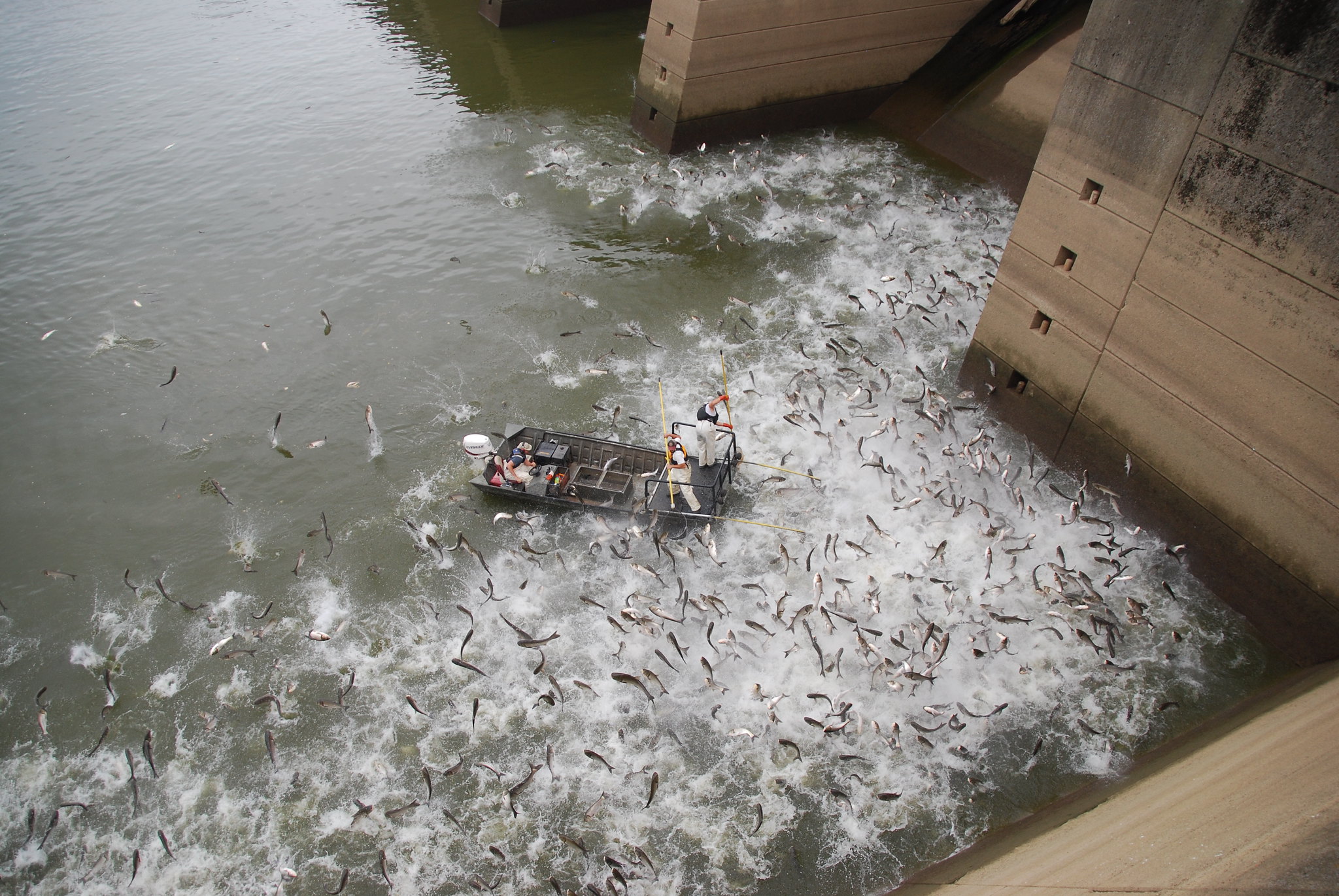Time is running out to stop invasive carp
Silver carp can jump up to 10 feet in the air when startled by a boat, such as during this electrofishing removal effort on the Cumberland River in Kentucky. (Photo credit: USFWS)
For decades invasive carp (silver carp, bighead carp, black carp and grass carp) have been working their way up the Mississippi River. Because they outcompete other fish for food and space, their spread can diminish ecosystem diversity, lower water quality and limit recreation in tributaries from Minnesota to the Gulf.
Though we don't fully know the extent of their population in Minnesota's portion of the Mississippi River, invasive carp have been recorded as far north as the Twin Cities metro as well as in the St. Croix and Minnesota rivers. However we believe that most of their population, and likely their reproductive activity, is still further downstream, meaning that we still have the opportunity to stop carp from reproducing in many of Minnesota's waterways — if we act right now.
One method the Minnesota Department of Natural Resources (DNR) uses to monitor carp is to attach tracking tags to some fish and allow them to continue living in the river as "traitors" to help us understand where fish go. This led to a stunning recent event.
High water levels in the Mississippi this spring helped one tagged silver carp swim 35 miles upstream in a single day through or over several locks and dams. The carp traveled from Pool 8 (near LaCrosse, WI) to Pool 5A (upstream of Winona, MN, just 22 miles short of Lake Pepin) in mere hours.
The Star Tribune and Rochester's KTTC TV were among the outlets that interviewed FMR staff and brought attention to this distressing finding.
State action is overdue
Invasive carp are introduced predators, brought to the U.S. in the 1970s as a way to clean aquatic farms and canals. As introduced species, it's easy for them to outcompete native fish, leading to native fish population decline, which harms ecosystems and recreational activities. Silver carp can even injure people; weighing over 40 pounds, these fish can jump high enough out of the water to hit boaters.
It's difficult to study how large a fish population is. However we do know that carp populations often explode unexpectedly and take us by surprise. We don't know when a population will reach a tipping point of no return, which means that no one can decisively say that Minnesota can afford to wait to stop them.
For this reason, FMR and other members of the Stop Carp Coalition have been asking the DNR to take more action to prevent invasive carp's spread in the Mississippi River. In October 2020, the coalition asked the DNR to update its Invasive Carp Action Plan to guide these expanded actions and support funding requests and policy changes.
Nearly two years later, we're still waiting for the updated plan. The DNR hasn't even started creating it yet.
Inaction has a cost
Invasive carp prevention and management is not simple; several tools and tactics will need to be deployed. One potential tool is a barrier at Lock and Dam 5, for which a feasibility study has been done. We know that carp are knocking at the door of Lock and Dam 5, and we know that the dams upstream are unlikely to be as effective as this barrier.
No one tactic will be sufficient on its own. Carp management will also need to include fish removal programs, strengthening the resilience of our native ecosystems, continuing research on additional options and other efforts.
The DNR has told us that it can't expand its current set of tactics without a full revision of its Invasive Carp Action Plan. Of course we support the need to review the science, learn from other localities, engage stakeholders and carefully examine the pros and cons of different management options. That planning should get underway immediately.
But just as action has its costs and consequences, so does inaction. With no timeline for completing an action plan or expanding its carp prevention efforts, the DNR has left our waterways and residents at risk.
We don't know how many invasive carp are in Minnesota, but we do know that the threat is imminent and that our state isn't ready for what's to come. Our state leaders need to act with far more urgency to evaluate and implement prevention strategies before it's too late.
Join us
Become a River Guardian today to hear about future opportunities to advocate to stop the spread of invasive carp and other ways to protect our river and enhance riverfront communities.
